History of Goju-ryu Karate
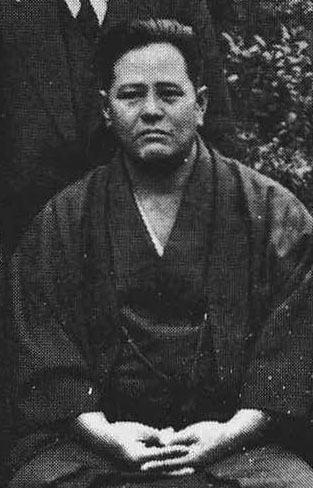
The World Budo Alliance presents the History of Goju-ryu Karate: If you’ve ever seen The Karate Kid, you’ve already seen Goju-ryu in action. This is the style that the fictional character Mr. Miyagi teaches to Daniel.
The style is based on Okinawan Karate styles. Of which were heavily influenced by Kung Fu and Chinese martial arts centuries earlier. It is also heavily influenced by a Chinese martial art called Fujian White Crane.
History of Goju-ryu Karate
Mr Miyagi's character was inspired by the real Chojun Miyagi, who founded the Goju-ryu style of Karate around 1930.
As such, the style is a more even mix of hard and soft techniques. And which is reflected in the name of the art. “Goju” literally means “hard-soft” in Japanese. Goju-ryu is a traditional Okinawan style of karate with an extensive history. The term Goju-ryu actually means “hard-soft style,” which refers to the closed hand techniques (hard) and open hand techniques. And also the circular movements (soft) that comprise this martial art.
Importantly the history of Goju-ryu Karate is somewhat clouded in mystery due to the lack of documentation regarding the art. And still, it is believed that during the 14th century Chinese Kempo was first introduced to Okinawa.
Therefore at the time in Okinawa, ‘te’ was practiced as a native fighting art. Kempo eventually combined, at least to an extent, with the native martial arts there to form Okinawa-te globally. Also as well as Tomari-te, Shuri-te, or Naha-te depending on the area of origin. It should be noted that in 1609, Japan invaded Okinawa. And during this time, Okinawans were banned from carrying weapons or practicing martial arts. Most of all, as a result, martial arts were practiced underground there for quite some time.
The History of Goju-ryu Karate
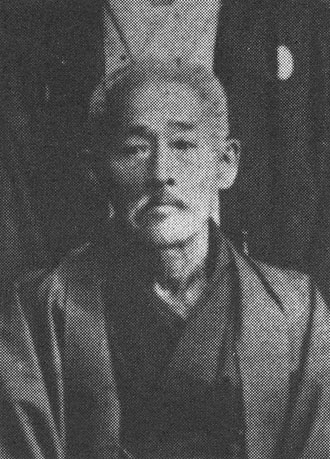
In 1873, a martial arts master by the name of Kanryo Higashionna in Japanese or Higaonna Kanryo in Okinawan (1853 - 1916). And he traveled to Fuzhou in the Fujian Province of China.
There he studied under various teachers from China. Including a man by the name of Ryu Ryu Ko (also sometimes called Liu Liu Ko or Ru Ko). Ryu Ryu Ko was a great master of the art of Whooping Crane Kung Fu.
Most of all, Higashionna returned to Okinawa in 1882. Hence he came back he began teaching a new martial arts style. Of which was one that comprised both his knowledge of the Okinawan styles with the martial arts he learned in China. What he came out with was Okinawan karate.
History of Goju-ryu Karate
Very important is that Higashionna’s best student was Chojun Miyagi (1888 - 1953). And Miyagi began studying under Hiagashionna at the tender age of 14.
When Higashionna died, many of his students continued to train with Miyagi. And Miyagi also traveled to China to study martial arts, just as his predecessor did.
He thereby brought his knowledge back to Japan where he began to refine the martial arts he and his students practiced.
And in 1930, at the All Japan Martial Arts Demonstration in Tokyo, a demonstrator asked Miyagi’s number one student, Jin’an Shinzato, what school or kind of martial arts he practiced. Therefore when Shinzato returned home and told Miyagi of this, Miyagi decided to call his style Goju-ryu.
History of Goju-ryu Karate - Characteristics of Goju-Ryu Karate
Most importantly Goju-ryu karate is generally a stand-up style. And characterized by both hard (closed fist) and soft (open hand or circular) techniques. And many Goju-ryu practitioners feel as if they are martial arts technicians. Because they utilize angles to deflect strikes rather than trying to meet strength with strength. In addition, Goju-ryu tends to emphasize meeting opponents with the opposite of what they are utilizing. And for example, striking the head (a hard part of the body) with the open hand (a soft part of the body). Also striking the groin (soft) with a groin kick (hard).
Beyond this, Goju-ryu karate is known for teaching breathing techniques to a great extent. Plus also utilizes some take-downs, throws, and weapons. Because of the Japanese suppression that occurred in the 1600's when they invaded, Okinawan martial artists tended to use weapons that were really farm tools. Tools such as the Bokken (wooden sword) and Bo (wooden staff). And was so as not to bring attention to the fact that they were practicing martial arts.
Kanryo Higaonna - History of Goju-ryu Karate
Continuing the History of Goju-ryu Karate. Kanryo Higaonna was born on March 10th, 1853 in Nishimura, Okinawa. And he was one of eight siblings and his family were of a lower economic class. Kanryo Higaonna’s father was a sailor. Plus he made his living shipping and trading items between the Ryukyu chain of islands. And further afield to China.
Upon his return he would always tell stories of the marvels of China and their martial arts. And at the age of 10, Kanryo Higaonna began assisting his father with his work on the boats. In 1867 when Kanryo Higaonna was 14, his father was killed in a fight. Most of all the reason for which still remains unknown. Therefore this was a terrible blow to the family. And especially to a young Kanryo Higaonna. Therefore his focus quickly turned from grief to revenge. He made the decision to travel to China to learn the deadly fighting arts and return to extract revenge on his father’s killer.
He arrived in the port of Fuzhou in Southern China. Immediately once there sought out other Okinawan’s living in the area. And he questioned them about great martial arts masters living in Fuzhou. Introductions were organised and Kanryo Higaonna was introduced to his eventual teacher. This was a man named Ryu Ryu Ko. So, Ryu Ryu Ko accepted the young teenager and made him swear an oath to follow his philosophies, principles. And also to promise never to misuse the martial arts he would learn.
History of Goju-ryu Karate - Kanryo Higaonna
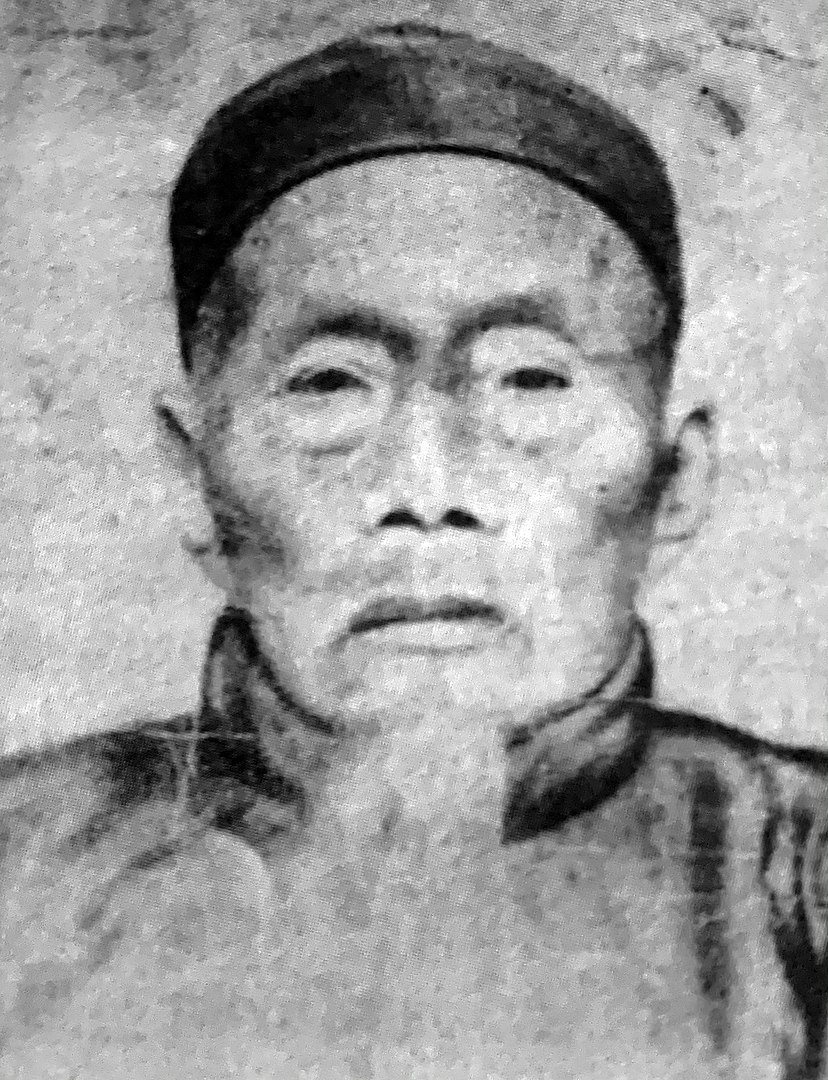
History of Goju-ryu Karate: Kanryo Higaonna would arrive to Ryu Ryu Ko’s house every morning. And he would assist his teacher in his work as a bamboo craftsman. Hence cutting and carting bamboo and making all manner of things out of it. Ryu Ryu Ko lived in a two story dwelling. The top floor was his house, the bottom his workshop and all training took place outside in the garden.
Thereby, through many hours of hard training and through his dedicated assistance with his teacher’s work, Kanryo Higaonna.
And he eventually became a ‘live in’ student. Plus he took up residence inside his teacher’s home and dedicated every waking moment to his master. Firstly he endured much hardship through the often brutal training and quickly developed an unbelievable level of power, strength and speed. Secondly he also learned about herbal medicines and studied the use of weapons.
History of Goju-ryu Karate - Forgiveness
After 14 years of loyal study, Ryu Ryu Ko had grown older and told Kanryo Higaonna it was time for him to return to his homeland of Okinawa.
Therefore in 1891 the two parted ways as Kanryo Higaonna followed the wishes of his master and they were never to see each other again. Kanryo Higaonna left China an accomplished martial artist and with 9 of the current Goju-ryu kata. Upon returning to Okinawa, his father’s killer heard of the great martial arts skills Kanryo Higaonna now possessed. The killer begged him for forgiveness and remembering the oath he had made to his master, he very graciously forgave the man.
Kanryo Higaonna continued his training in Okinawa. Firstly on his own and then eventually began teaching students in his home. And he called his martial art Naha-te after the capital city of Okinawa where he was based and following the example of the other main Okinawan styles of the time: Shuri-te and Tomari-te. He also eventually took a position as a karate instructor at the Naha commercial high school in 1905.
History of Goju-ryu Karate - Kanryo Higaonna to Chojun Miyagi
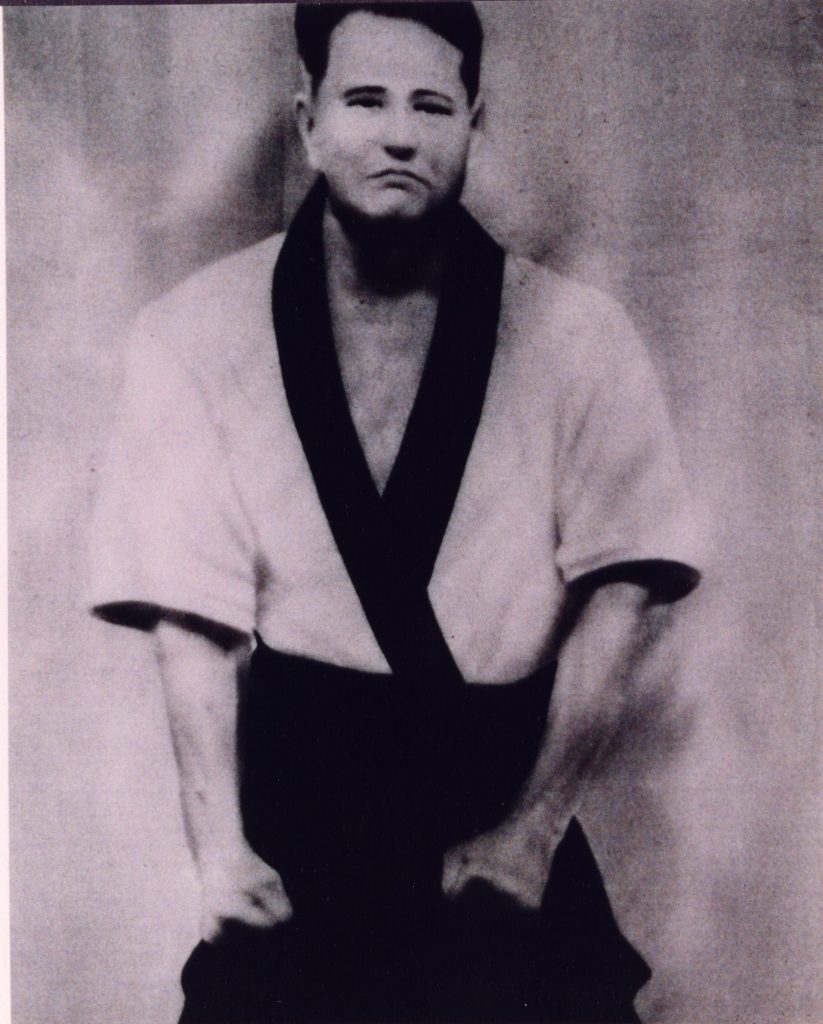
History of Goju-ryu Karate: Chojun Miyagi was born on April 25th, 1888. Most important is he was born into a wealthy family. However as a youth was at times unruly. And at the age of 11 he was taken to Ryuko Aragaki (the grandfather of Goju-ryu Master Shuichi Aragaki, IOGKF Technical Advisor), who was 24 at the time. This was to learn karate from him in hopes to instill discipline in the mischievous boy.
And Chojun Miyagi immediately developed a love for karate and became a very serious student. So Aragaki recognised this and decided that he needed to study under a strict teacher. Most importantly someone whose karate was second to none. And to unlock Chojun Miyagi’s full potential.
History of Goju-ryu Karate
Therefore in 1902 at the age of 14 he was taken and introduced to Kanryo Higaonna and was accepted as a student. Kanryo Sensei was 49 years old at this point. And he was known by the nick name ‘Ashi no Higaonna’ (meaning ”Legs” Higaonna). Because of his exceptionally strong legs.
Although warned of the severity of the training, Chojun Miyagi’s expectations were far exceeded when he began his training in Naha-te.
And the training he received was intense, very brutal. Plus he trained extra outside of his classes to strengthen his body to aid in his fast improvement. Kanryo Sensei observed this and eventually Chojun Sensei became the student he chose to learn the entire art of Naha-te.
At the time, students only learned Sanchin and one other kata. Training took place at the Kanryo Sensei’s home each evening. And after the usual two hour session, Kanryo Sensei would keep Chojun Miyagi behind for personal one on one instruction in the entire system.
History of Goju-ryu Karate
History of Goju-ryu Karate: Therefore in 1910 World War I swept across the globe and Chojun Miyagi was called upon for mandatory military service. He became a soldier at the age of 20 and was discharged at the age of 22. Therefore he rushed back home to Okinawa upon hearing that his teacher’s health had deteriorated.
Chojun Miyagi desperately wanted to learn the rest of the Naha-te style from his teacher. Most of all to also care for him in his later years. Everyday Chojun Miyagi would bring Kanryo Sensei to his own home to care for and learn from him.
Very importantly he became the only student to learn all the Naha-te kata from Kanryo Sensei, who passed away three years later in 1915. Many Okinawans referred to Kanryo Higaonna by the title of Bushi, meaning a distinguished master of the martial arts.
Also in 1915, Chojun Miyagi fulfilled the final wish his teacher had for him and made the trip to Fuzhou in China. He traveled by boat on the same route Kanryo Sensei had many years before him. Plus he explored and researched the area, visiting the house of Ryu Ryu Ko. And demonstrating the kata he had learned to an old man who was a student of Ryu Ryu Ko. During his two month stay, Chojun Miyagi recorded much information about Ryu Ryu Ko.
History of Goju-ryu Karate - Return to Okinawa
Upon his return to Okinawa he was now 29 years old. And he took his teacher’s place and began teaching Naha-te. He worked to further develop the fighting system he had inherited. Chojun Sensei had learned the kata Rokkishu in China and his further development of this resulted in the creation of Tensho Kata.
And he also researched and created warm up exercises for the body. Furthermore Chojun Miyagi revised Sanchin Kata to be performed in a straight line, moving both forward and backwards. This was instead of turning around. He taught out of both his home, the now famous Garden Dojo, and also at a space he rented at the Naha Commercial High School.
Therefore the local police force became concerned about Chojun Miyagi’s reputation. And they warned him of the consequences of misusing karate. Chojun Miyagi explained the true nature of his teachings. Therefore in doing so he was hired to teach at the Okinawan Police academy. In 1926 Chojun Miyagi founded the Karate Kenkyu Club, bringing together the top Masters of the main styles of karate to unite under the common goal of spreading true karate to future generations. The Masters in this club were Chojun Miyagi, Chomo Hanashiro, Choyu Motobu and Kenwa Mabuni.
The History of Goju-ryu Karate continues
In 1930 an invitation was received to perform a demonstration in Tokyo at the celebration of Crown Prince Hirohito’s succession to the throne. However Chojun Miyagi couldn’t attend, but instead sent his top student, Jin’an Shinzato, in his place. And after Shinzato’s demonstration, he was asked by someone who viewed his performance what the name of his style was.
Shinzato wasn’t sure how to answer, as Naha-te was more of an informal name. Therefore he related this story to Chojun Miyagi who thought long and hard about this and on what to name his karate style. Within the famous martial arts text, the Bubishi, is a poem called the Kempo Haku (the eight poems of the fist). And Chojun Sensei was quite fond of it:
History of Goju-ryu Karate - Bubishi Poem
1) The mind is one with heaven and earth.
2) The circulatory rhythm of the body is similar to the cycle of the sun and the moon.
3) The way of inhaling and exhaling is hardness and softness.
4) Act in accordance with time and change.
5) Techniques will occur in the absence of conscious thought.
6) The feet must advance and retreat, separate and meet.
7) The eyes do not miss even the slightest change.
8) The ears listen well in all directions.
History of Goju-ryu Karate - Summary
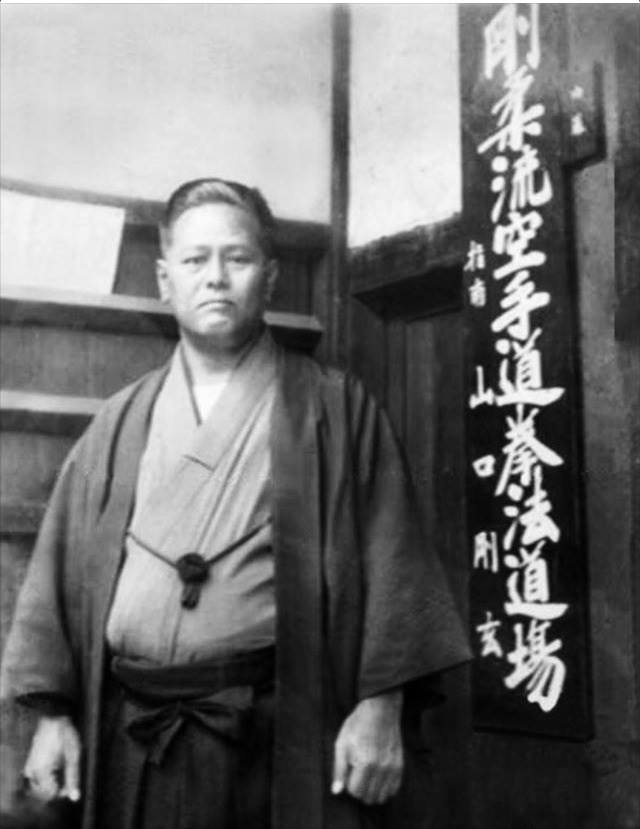
History of Goju-ryu Karate: Okinawan Goju-Ryu karate is one of the most traditional and most respected martial arts in the world today. Its roots can be traced back to the political and social ties between Okinawa and China in the 1500’s.
Ryu Ryu Ko, Kanryo Higaonna, and Chojun Miyagi were instrumental in the development and preservation of Goju.
Therefore today’s students owe it to themselves (and the ancient masters) to read and understand Morio Higaonna’s book “The History of Karate”.
I hope you enjoyed the The History of Goju-ryu Karate. I very much enjoyed this history. It has some great moral lessons and is devoid of the politics we so often see in martial art history.
History of Goju-ryu Karate Researched by: Sensei Kara Borshuk
History of Goju-ryu Karate Edited by: Grand Master Art Mason